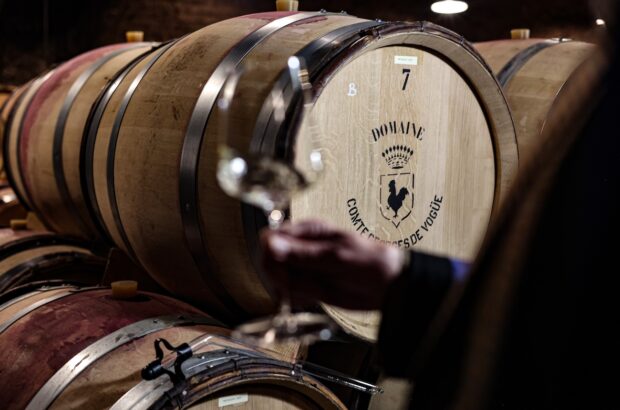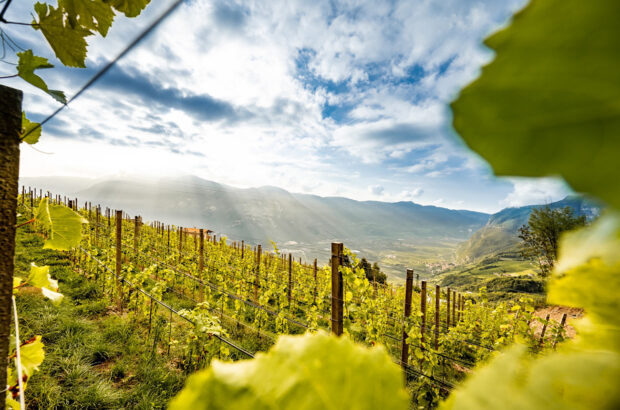Find out why it makes the Decanter wine hall of fame...
Isole e Olena, Cepparello 1982
Bottles produced 14,490 plus 765 magnums
Composition 100% Sangiovese
Average yield 28hl/ha
Alcohol 13.5%
Release price 8,800 lire (about £3.56 in 1985)
Price today N/A
A legend because…
First produced in 1980, Cepparello was one of the original SuperTuscans. Unlike most of the others, it was made entirely from Sangiovese (although a dash of Cabernet Sauvignon was added in a very few vintages). Paolo de Marchi, owner and winemaker of the Isole e Olena estate, was not opposed to international varieties, and became known for his singlevarietal Chardonnay, Syrah and Cabernet Sauvignon bottlings, but he also wanted to demonstrate the potential of pure Sangiovese at a time when the Chianti Classico regulations required the inclusion of other grape varieties
Looking back
In the 1980s Chianti Classico producers were supposed to include (white) Trebbiano grapes in the blend, although many growers, including De Marchi, simply ignored the requirement. From 1996 it became possible, through new rules connected to Chianti Classico’s promotion from DOC to DOCG status, to make the wine solely from Sangiovese. Previously Sangiovese was not held in highest regard, even though it could deliver superlative results in the hillier zones of Tuscany. Cepparello, which takes its name from a stream on the property, validated the variety.
The vintage
1982 was the first vintage of Cepparello that De Marchi was satisfied with. May hailstorms resulted in the loss of half the crop, but gave better-quality fruit. Summer was sunny and hot with some rain. A fine autumn brought the grapes to full ripeness, and the harvest was early.
The terroir
Until World War II, Isole e Olena was mostly home to sharecroppers. It lost most of its inhabitants at the end of that war and De Marchi’s father bought the estate in 1956. The 50 hectares of vineyards are scattered among various sites up to 470m. The soil is galestro: thin and quite rocky, with sandstone and schistous clay beneath the topsoil. The highest vineyards are breezy, benefit from day-long sunshine and often ripen up to 12 days later than lower sites. Cepparello is made from grapes selected from the best parcels and, usually, the oldest vines. Yields rarely exceed 35hl/ha. It is not made in weaker vintages such as 1992.
The wine
The winemaking has evolved over the years. The very first vintage, 1980, was aged in= chestnut casks, but in 1982 De Marchi switched to French and Slavonian oak, the traditional container for Chianti Classico. After destemming, the must was fermented for over three weeks at temperatures up to 34˚C, with regular pumpovers. The wine spent 18 months in barrels, of which two-thirds were French, and one-third Slavonian. A third of the barrels were new. The wine was given a year’s bottle age before being released.
The reaction
I first tasted the wine in 1989, finding a sweet ‘Californian’ tone on the nose, while on the palate ‘rich tannins still mask the fruit, which is sweetish and dense’. In 1993 I noted: ‘Concentrated and impressive but austere. Good length.’
Ian D’Agata tasted the wine in 2009: ‘Dense, bright and seamless, with lively acidity providing backbone and support to the delicate red cherry and dark plum flavours. Good to go right now and with a short life expectancy ahead of it… so I’m not sure I’ll hold on to this much longer.’
More Wine Legends:

Wine Legend: Egon Müller-Scharzhof TBA 1976
Why it makes our hall of fame...

Wine Legend: HM Borges, Terrantez 1862
Michael Broadbent says the 1862 was not only the best vintage of Terrantez ever made but ‘the greatest of all

Wine Legend: De Bortoli, Noble One 1982
Although Australia has a long tradition of sweet wine production (mostly fortified), Noble One, first made in 1982 and labelled

Wine Legend: Biondi Santi, Tenuta il Greppo 1975
Biondi Santi is a truly iconic estate: in the late 19th century it was the first in Montalcino...

Wine Legend: Château Montrose 1990
What makes Château Montrose 1990 a worthy wine legend...

Wine Legend: Bonneau du Martray, Corton-Charlemagne Grand Cru 1990
What makes Bonneau du Martray 1990 legendary...

Wine Legend: Taylor’s Vintage Port 1927, Douro, Portugal
What makes it a wine legend...?







